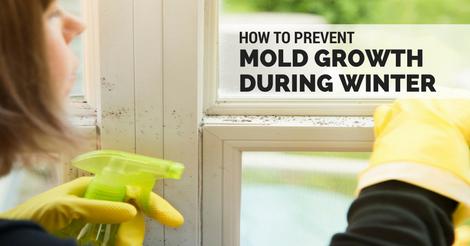Many people believe that mold issues disappear in the winter, but mold growth is a year-round problem. It flourishes in temperatures between 60 and 80 degrees and grows wherever humidity or moisture is present. During the winter months, it can grow in places that it is hard to detect such as in the walls and attic.
Mold can decompose wood, rot carpeting, furniture, and some insulation. Many people have allergic reactions to mold and mold spores.
During the winter, when the air is drier, the humidity can rise and stay in the attic. This can cause mold to occur inside walls and in the attic. If there are air leaks between the ceiling and attic it will start condensing into water when it hits the cold surface of your roof and fall onto your insulation and wooden rafters. The wet insulation will lose its effectiveness and begin to grow mold.
Window frames are also at risk for mold growth on exceptionally cold days if your home has enough humidity. Water condenses on cold glass and feeds mold growth.
Here are some tips on how to help mold from invading your home:
- Clean up the visible mold with diluted bleach or vinegar.
- Check and fix leaks beneath any sinks and keep dry.
- Seal air leaks between your attic and ceiling.
- Make sure your attic has adequate ventilation.
Consider installing a whole-home dehumidifier. These units are installed as part of your home’s heating or cooling system. The unit automatically controls and adjusts the humidity level in your home based on outdoor and indoor temperatures. With automatic control, you’ll always know what humidity level is in your home and enjoy peace of mind that it’s being maintained correctly.
If you would like to learn more about how to improve your indoor air quality, contact us today!



